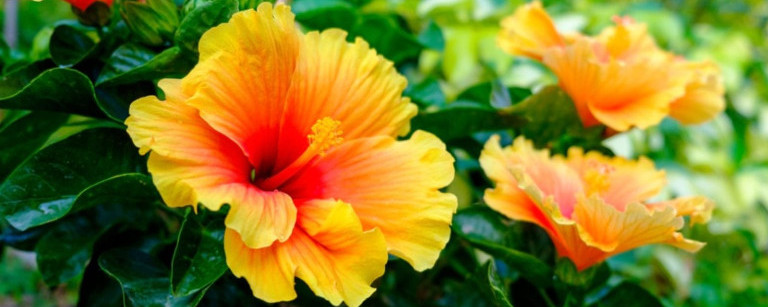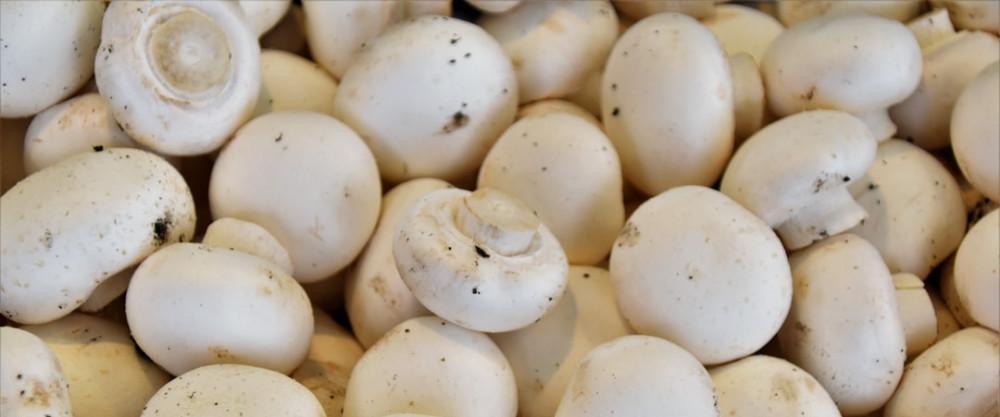
Indoor garden inspiration.
Are you looking for indoor gardening inspiration? We aren’t surprised at all. After all, we’ve all spent a lot more time this year inside our own four walls. Wouldn’t it be lovely to freshen it all up with some leafy green foliage and even a blossom or two?
The possibilities for indoor gardens are endless. You may grow your own indoor lemon tree, start a tasty herb garden, or create a living wall.
Or, if you want to start small, consider growing a tiny collection of succulents. The opportunity to mix and match the most random and diverse bunch of plants makes the indoor version of a garden so much fun.
Build your indoor plant sanctuary.
Nothing can stop you from building a plant-filled sanctuary indoors, no matter what your outside-space scenario is. Even if you already have an outside garden, there’s always a reason to add more plants to your life.
Plants don’t have to be used just in garden areas or as patio plants; Their brightness and health benefits can be enjoyed in any setting. Plants and plant holders can be customized to suit the decor of your area regardless of the environment.
Make a plan for how to begin an indoor garden.
Garden Rooms.
Garden room ideas are numerous, so take some time to consider what you want from your garden room. Do you want to escape the cold of winter in a tropical paradise? Are you seeking a tea garden in the English style? With your garden room ideas, imagine what you’d like your garden room to be like in an ideal world.
Select a location.
It’s not easy to devote a full space to an indoor garden room. Take into account the room’s natural temperature, light, and accessibility. Remember that you have the ability to add both light and heat. You can address this if you have a room that is generally cold in the winter but gets good southern exposure light. You can also remedy this if you have a warm room with no natural light.
Decorate the space.
When planning an indoor garden room, there are five crucial things to consider.
Flooring. Avoid using wood or carpet as flooring since watering the plants may destroy them. Ceramic, slate, or linoleum are better garden room flooring options.
Light. Even if your room gets a lot of light, chances are it won’t be enough to keep the plants alive over the winter. At various heights, place a slew of fluorescent or broad spectrum lights.
Air flow. For plants to thrive, they require adequate ventilation and air flow. If the space you’ve picked has poor air flow, consider installing a ceiling or floor fan to assist circulate the air.
Humidity. You’ll want to apply humidity to most plants. A humidifier set on a timer might help to increase the humidity in the space.
Water.Make sure you have adequate access to water if planning a larger room. You will not want to carry water from other rooms in the house if possible.
Select the plants.
Garden room plant ideas must take into account the appearance you want to achieve as well as the environment in your indoor garden room. Some of my top 5 favorite easy to grow plants are listed here.
Spider Plant (Chlorophytum comosum)

One of the most flexible and simple-to-grow houseplants is the spider plant. Its spider-like offshoots, or spiderettes, drape down from the parent plant like spiders on a web, earning it the name. Spider plants can be cultivated in baskets or pots as hanging or trailing plants. They can survive in less-than-ideal light settings, including artificial light, for a long time. You keep the soil from drying out, make sure to water it on a regular basis.
The Snake Plant (Sansevieria trifasciata)

These are some of the greatest indoor plants for low light. They have a striking appearance and require little upkeep. The snake plant, also known as mother-in-tongue, law’s has a lengthy lifespan and can live for decades. It prefers to grow in partial shade, although it may also thrive in shaded areas. It should be noted that it is hazardous to pets. Also, avoid over watering it, especially if it isn’t exposed to direct sunlight, which dries up the soil.
English Ivy (Hedera helix)

English ivy can spread as a ground cover outside, but when grown in hanging baskets as a low-light indoor plant, it merely creates a lovely trailing look. Place your English ivy in an area that gets indirect light indoors. Make careful to spray the plant to keep it moist, and if feasible, keep it in a cold room at night (ideally around 60 degrees Fahrenheit). Also, because the plant is harmful, keep dogs and other pets away from it.
Maidenhair Fern (Adiantum Raddianum)

The delicate, fan-shaped leaves of the maidenhair fern are grouped on dark stems. It’s a low-light indoor plant that gives a splash of color to a room. These ferns, on the other hand, require a continually damp, but not soggy, soil to thrive. They also prefer a warm, humid climate, as well as a place that is not exposed to direct sunlight.
Peace Lily (Spathiphyllum)

Peace lilies are a common low-light indoor plant that can easily be neglected. They blossom with lovely white blooms and generate huge green leaves. They do, however, require enough water to keep the foliage from wilting. Watering, on the other hand, will frequently revive withered leaves. Shade-loving plants should be put in a location that receives only indirect light. Also, because they are harmful, keep them away from your furry friends.
My top 3 Indoor trees.
Fiddle leaf fig (Ficus lyrata)

The fiddle leaf fig is a perennial favorite and an excellent plant for brightening up a drab spot. It adds a statement piece to any area with its glossy, black foliage.
It’s preferable to put it in a well-lit area where it’ll get indirect illumination throughout the day.
When it comes to watering, make sure to keep the soil moist but let it dry out for at least 1 inch before watering again. It requires more frequent watering during the summer.
It’s not pet-friendly, and it is toxic for our furry friends.
Rubber plant (Ficus elastica)

The rubber plant is the less fussy sibling of the fiddle leaf, which can be pruned down to 1-foot tall. Its bold, bright green leaves give a rubbery appearance.
This plant requires intense light, but not direct sunshine. It’s best to put it in a partially sunny corner.
Try watering it once or twice a week (yellow leaves mean laying off the water). Before watering, allow the soil to dry on top. During the summer, when it thrives, be careful to keep it very moist.
This is not pet-friendly, and if eaten, it is dangerous to both pets and people.
Bamboo Palm. (Chamaedorea seifrizii)

The bamboo palm is one of the more simple palms to care for, and it adapts well to its surroundings. So, if you don’t have a lot of light, this plant will be a terrific addition. It’s also on the list of plants that purify the air.
Except for direct sunshine, this plant thrives in all types of lighting.
Keep the soil moist, but make sure the plant has adequate drainage. It doesn’t like to a lot of water.
This plant is non-toxic, making it suitable for pets.
Choose the correct potting mix.
In several respects, potting soil differs from topsoil and garden soil. Potting soil is used to grow plants in pots or containers, as the name implies.
It’s designed to give plants that will spend the majority of their life in containers a chemically balanced, aerated, and well-drained environment.
Potting soil is required for all potted and container plants, whether they are kept indoors or outdoors. A mixture of peat moss, ground pine bark, and perlite or vermiculite should be used. These last two help to aerate the soil and make it lighter.
A modest amount of plant food or fertilizer should be added to the potting soil. To keep the moss and pine bark from drying out, it may also add limestone and a wetting agent.
Pro Tip: When buying potting mix the soil should feel soft in the bags, as though it isn’t too damp or firmly packed. Nor should it be too light, as that shows it has dried out.
Choose your pots or containers.
Choose the correct size.
Understanding the size of pot you require is probably the first step in selecting a new container. Here is a quick rule of thumb for choosing your pot size.
For plants growing in pots 10 inches in diameter or smaller, increase the pot size by 1 to 2 inches in diameter.
Increase the pot size by 2 or 3 inches in diameter for larger plants growing in pots larger than 10 inches in diameter.
If you’re tempted to go with a bigger pot to allow future growth, please don’t do it. Houseplants take a long time to grow.
A pot that is too big for the plant will look out of place. Also, pots that are too large for the plant can cause health issues due to excess potting soil drying out too slowly. Soil that stays wet too long causes root and stem rot.
Drainage is Crucial
Always choose a pot with adequate drainage holes to ensure that the potting soil does not become too wet after watering your houseplants.
The surplus may freely leave through the container’s bottom, letting oxygen to reach the plant roots (if you use a saucer or tray underneath the pot, make sure to empty it to stop roots from soaking up too much moisture)
Keep your pots clean
To avoid disease, keep your pots clean. If you’re going to reuse a pot, make sure it’s clean on the inside and out. Mineral accumulation after the water evaporates causes a white crust to form on clay pots after lengthy use. Scrub the crust with a steel-wool pad or sharp bristle brush in a vinegar and water solution to remove it.
Plastic or ceramic pots are easier to clean and a gentle scrub in water will loosen most of the soil material off the pot.
The smaller areas.
If you just have a little space, perhaps a spare dresser, table, or desk, why not go all out and fill it with our favorite indoor plants?
Seeing a large number of potted plants is incredibly pleasant. Plus, when you have the time, you can enjoy the peaceful process of lovingly caring for them.
We adore the hanging pots and the beautiful air plants peeking out from behind the wire frame. The end result is a stunning indoor garden that everyone may enjoy.
Conclusion.
Once you get your indoor garden set up, whether big or small, the joy in creating a space for your plants and the rewards both visually and mentally will be well worth it.
You will be wondering why you didn’t start your indoor garden earlier.
Stephen is the Author and Owner of My Garden Tools.



